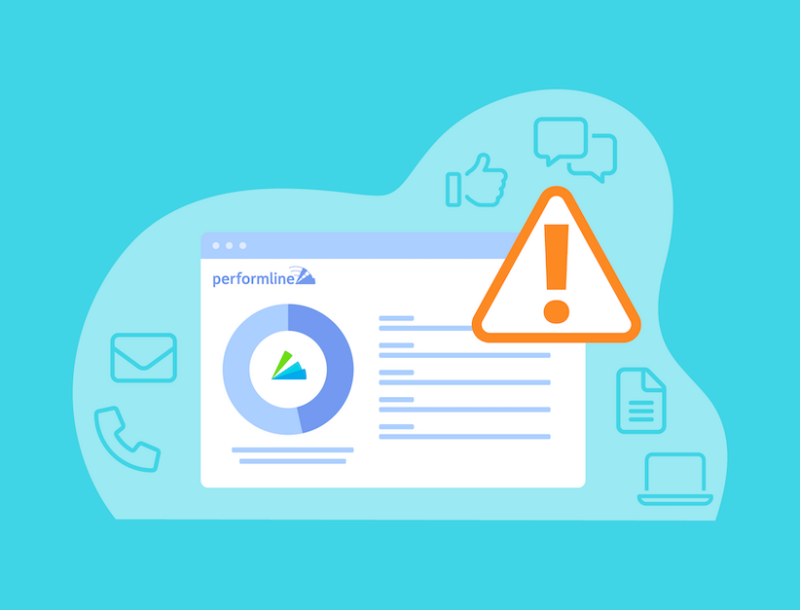Why Banks are Investing in Marketing Compliance Technology

Regulatory scrutiny for banks is more intense than ever. Heightened oversight from regulatory bodies such as the OCC, FDIC, and CFPB makes compliance a top priority.
This shift has sparked a significant change in the approach of banks towards compliance, with many shifting their strategies from outdated and manual processes to automated and efficient ones through the use of technology.
Here’s why leading banks are investing in compliance technology, how it leads to more efficient operations and partnerships, and how PerformLine can help.
How has regulatory scrutiny of banks been increasing?
In a rapidly evolving financial landscape—with growing complexity and increased risks associated with digital banking, fintech partnerships, and the need to ensure consumer protection and financial stability—regulators have significantly increased their oversight and scrutiny of banks.
The OCC, FDIC, and Federal Reserve have been focused on banks’ third-party relationships, which include their partnerships with fintech companies. These regulators released joint risk management guidance, highlighting key areas of consideration for banks when developing relationships with fintechs and other third parties.
The CFPB has ramped up its examination of consumer lending practices, including scrutinizing unfair, deceptive, or abusive acts and practices (UDAAP), and has also been closely examining the growing integration of fintech in banking.
Why are banks investing in marketing compliance technology?
As regulatory bodies continue to tighten their scrutiny, banks are finding themselves facing increasing compliance responsibilities and navigating through an ever-growing web of complexities. The process of staying compliant can be time-consuming and demanding.
And, as the industry continues to face economic headwinds, many banks are reducing their headcount, forcing compliance and risk teams to try to do more with less.
The growing complexity and scale of compliance operations, coupled with decreased resources, are driving banks to move from traditional, manual compliance processes toward technology-driven risk management.
The use of automated marketing compliance technology can help banks do more with less and significantly increase overall efficiency.
Technology provides comprehensive compliance coverage across channels without additional headcount, freeing employees’ time from manual and mundane tasks to allow them to focus on more strategic, high-impact initiatives.
What are the benefits of compliance technology for banks?
Adopting compliance technologies offers several advantages for banks:
- Efficiency: Compliance technology streamlines and automates various regulatory processes, reducing manual efforts, thus allowing banks to handle compliance tasks quickly and more efficiently without additional headcount
- Scalability: Compliance technology can adapt to the growing needs of the organization, making it easier for banks to expand their operations and partnerships without a significant increase in compliance-related workload
- Comprehensive coverage: Compliance technology allows banks to monitor their brand, products, and partners at scale across marketing channels, enabling them to manage risks across various aspects of their operations and partnerships
- Cost savings: By automating routine compliance tasks and minimizing the risk of regulatory fines or penalties through real-time monitoring, compliance technology helps banks save on operational costs and potential legal expenses, contributing to overall cost savings.
Mitigating risk in third-party relationships through technology
As mentioned above, a crucial aspect of modern banking is the management of third-party relationships.
The use of third parties can reduce a banking organization’s direct control over activities and may introduce new risks or increase existing risks, such as operational, compliance, and strategic risks.
INTERAGENCY GUIDANCE ON THIRD-PARTY RELATIONSHIPS: RISK MANAGEMENT
Compliance technology plays a pivotal role here. It enables banks to scale their monitoring capabilities, ensuring that their partners promote their products and brand compliantly and accurately.
The use of technology allows banks to grow and scale fintech partner programs while maintaining compliance.
How one bank uses compliance technology to monitor over 200 fintech partners
Investing in an automated compliance technology is key for banks to manage increasing compliance pressure amidst decreasing resources—that’s why leading banks are turning to PerformLine to help.
One bank uses PerformLine to monitor content from over 200 fintech partners across various industries. Since implementation, this bank has discovered over 700 new web pages and over 97,000 social media posts from their partners to monitor for compliance.
By partnering with PerformLine, this bank is confident that it has comprehensive compliance coverage across channels and that its brand is meeting its regulatory and brand requirements. They have successfully streamlined their compliance process through automation, making it comprehensive, efficient, and scalable.
Compliance technology and efficiency with PerformLine
PerformLine’s omni-channel compliance monitoring solution provides banks with:
- Comprehensive coverage of your organization and your partners across marketing channels, including documents, the web, social media, emails, calls, and messages
- An adaptable compliance program that matches your risk threshold as you bring on new partners
- Scalability and efficiency as your partner program grows, allowing your organization to bring on more partners while ensuring compliance
- A competitive advantage with a robust and proactive compliance management system
Learn more about how PerformLine makes compliance automated, scalable, and efficient. Request a demo today.


